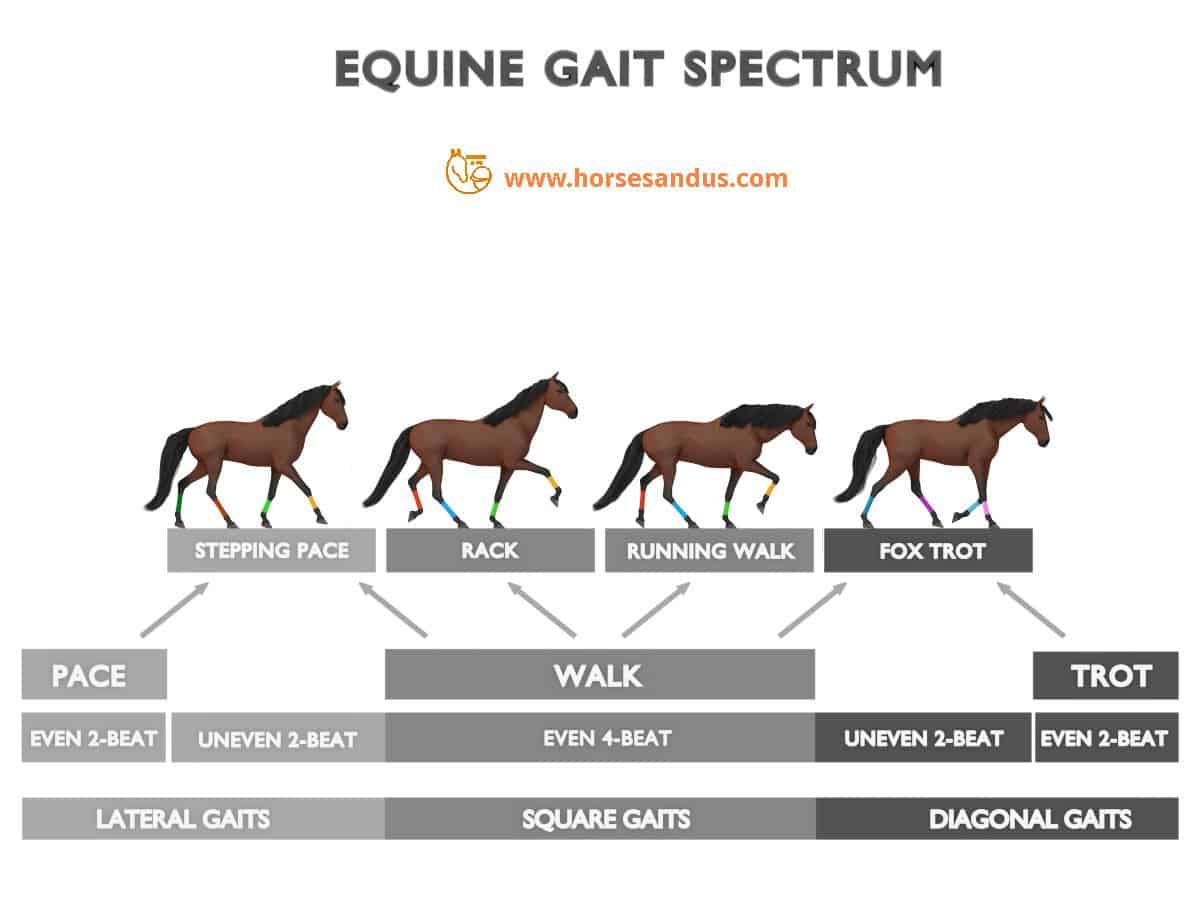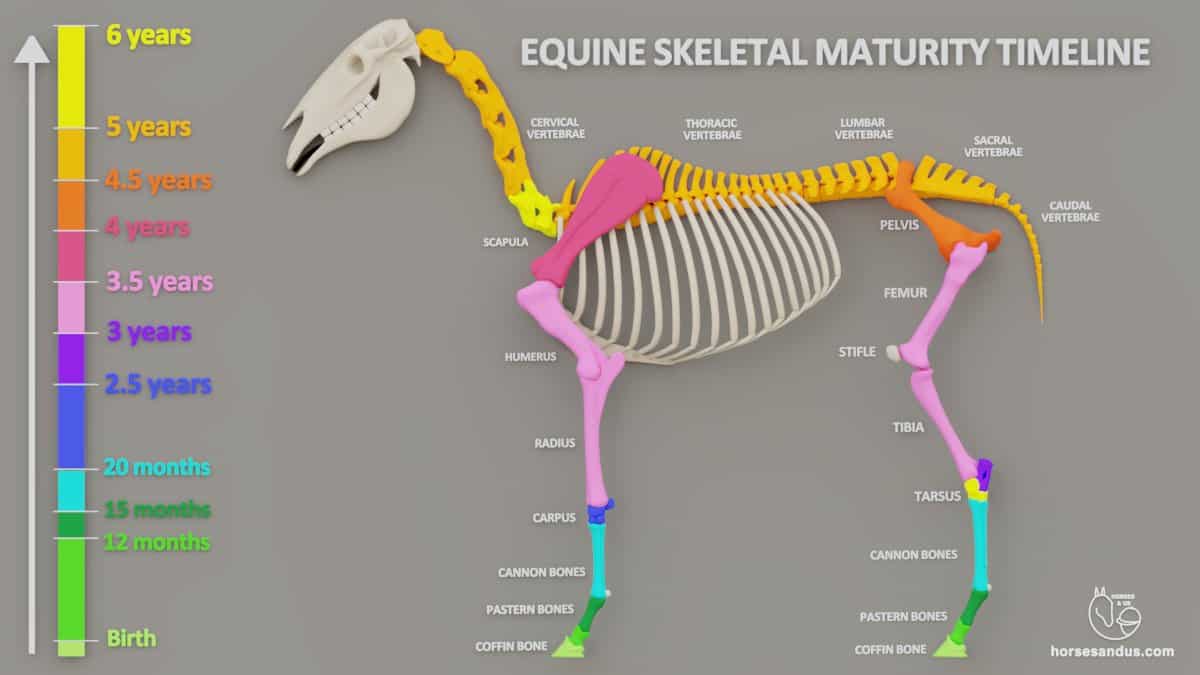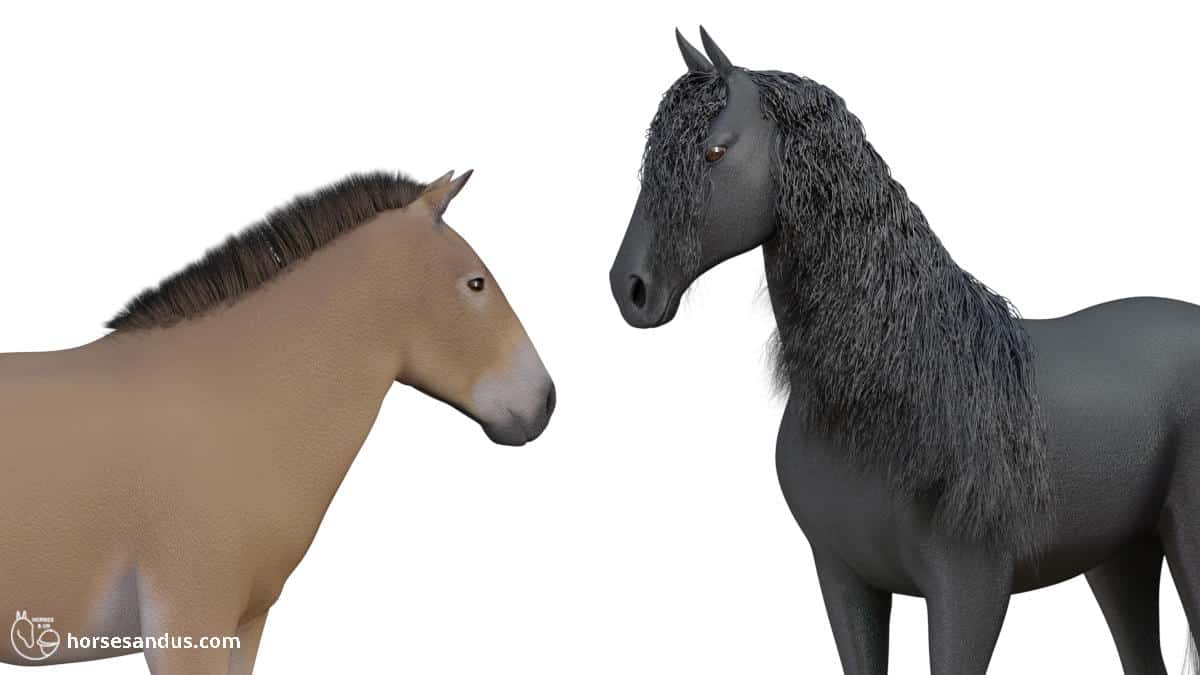If you do not work closely with horses, you may be surprised at the different terms used to describe male and female horses in the different stages of the horse’s life cycle.
Horses go through unique stages during their life, where they experience different physical changes. The 5 stages in a horse’s life cycle are:
- Suckling foal (still nursing)
- Weanling foal (already weaned)
- Yearling (between one and two years old)
- Colt or Filly (younger than four years)
- Stallion or Mare (older than four years).
Understanding the development and the different needs at each stage of the horse’s life cycle can help you better care for them. In particular, the horse’s skeletal development is very important for its lifelong soundness and athletic performance.
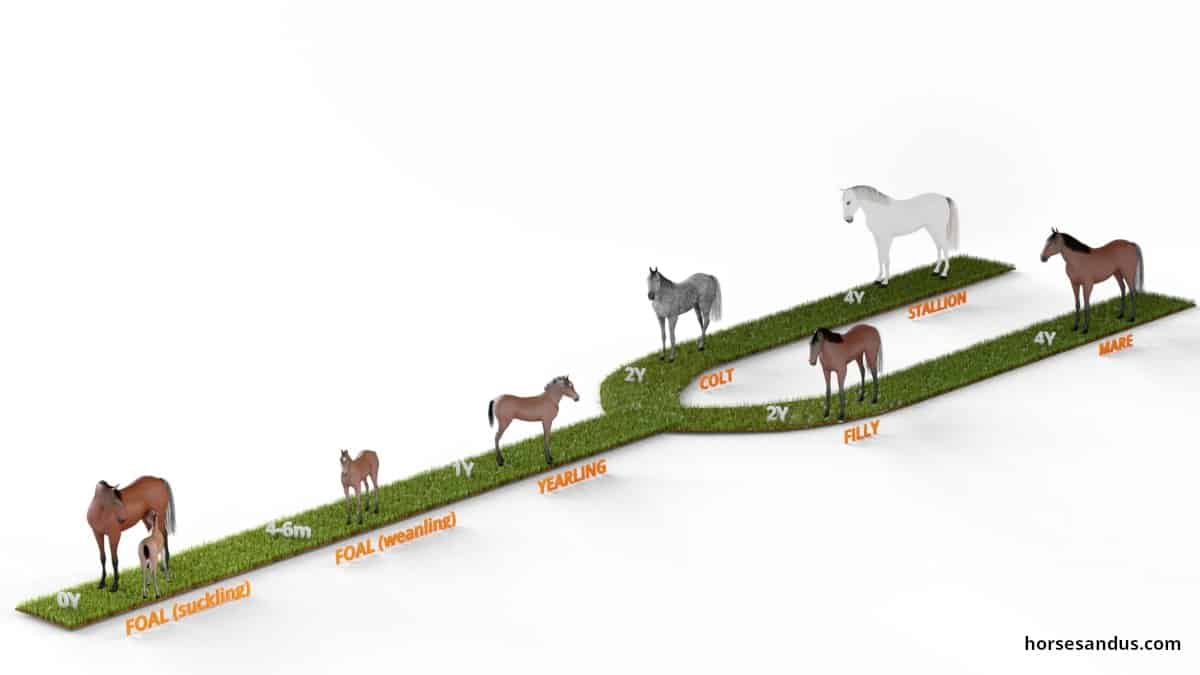
1. Foal (suckling)
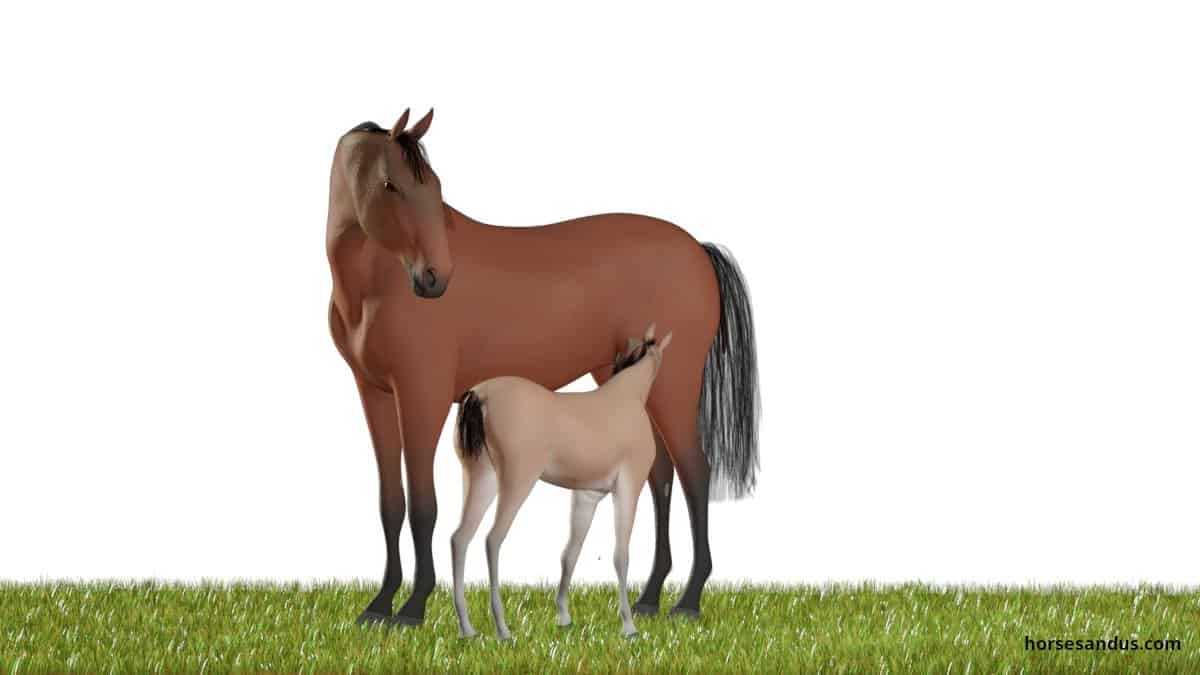
From the time they are born and while they are still nursing from their mother the baby horses are called foals or suckling foals.
One of the foal’s first missions in life is to stand and nurse. They can do this after 2 hours of birth. In doing so, it receives the antibody-rich colostrum that helps protect it from disease. Foals nurse very frequently, about 3 to 5 times per hour.
During the first weeks of life, the mare’s milk provides all the nutrients that the foal needs, even though they can start nibbling at grass after one week.
By nibbling and sampling, the foal learns to eat solid food to prepare for the next stage when the mare´s milk is no longer sufficient for its nutritional needs, which happens around 2 months of age. Its digestive system quickly adapts to dietary changes.
By the third month, the mare’s milk supply gradually declines and a natural weaning process begins.
After four months, the foal no longer gets a substantial amount of nutrition from its mother´s milk.
Comparing to humans the foal is the equivalent of a baby.
2. Foal (weanling)
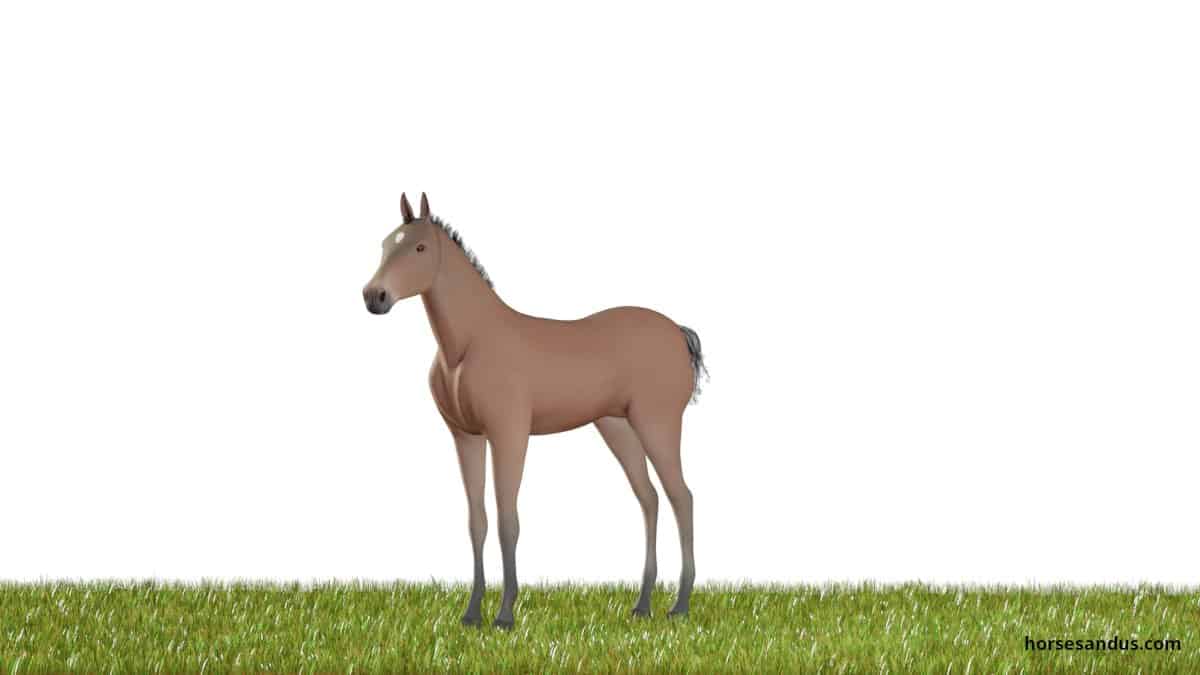
A weanling is a foal that is no longer getting milk from its mother but is not yet a year old.
Weaning is usually done when the foal is 4 to 6 months old. It is one of the most traumatic events in a foal’s life due to the separation from his mother.
Throughout the weaning period of rapid growth, both nutrition and exercise are very important for healthy development. If the foal does not have the appropriate nutrition or exercise, a developmental orthopedic disease can occur.
During this time, the foal is learning how to become a horse. Socialization skills are being learned, and for this, the weanling needs to be around both horses and humans.
Comparing to humans the weanling is the equivalent to a toddler.
3. Yearling
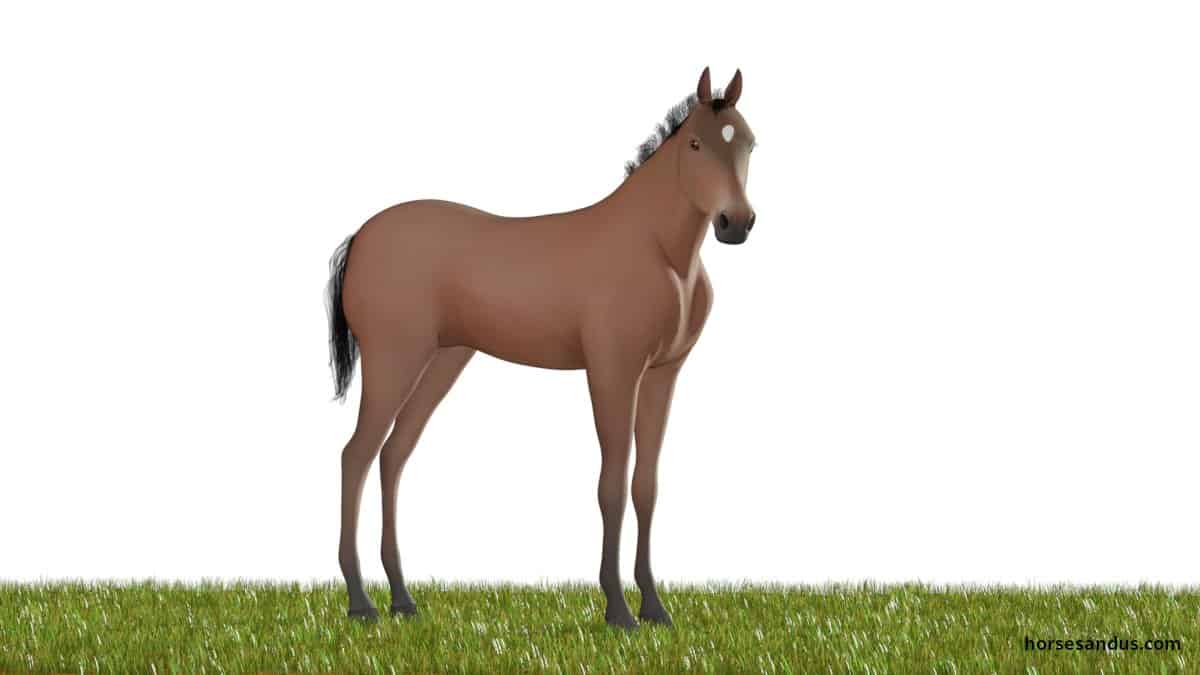
A yearling is a male or female horse over the age of one year until 2 years. Yearlings are nearly always fully weaned and independent of their mothers. They sleep less and spend more of their time standing rather than lying down.
At this age, they are very curious and enjoy mouthing anything they find in their pastures or stalls. They play among themselves by play fighting, galloping, bucking, and running with bursts of speed.
Yearlings are similar to teenagers, and while overcoming much of their awkwardness, they continue to need much guidance as they learn about how to interact with other horses and humans.
During this period, a yearling should be learning to be obedient, to lead quietly, and to stand tied for grooming, vet, and farrier work.
They may look unbalanced and even ugly as they go through different growth sprouts. The growth rate slows considerably by the age of 1 year.
Comparing to humans the yearling ranges from pre-schooler to pre-teen.
4. Filly and Colt
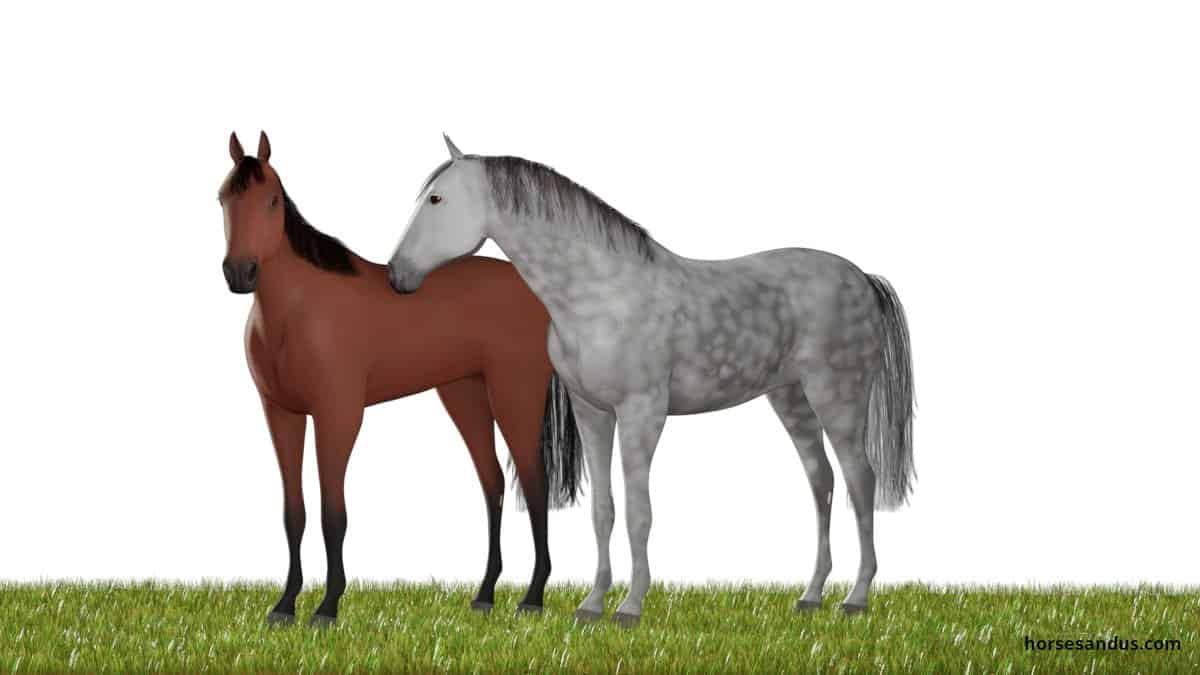
Unlike the previous stages, after 2 years of age, the male and female horses have different names.
Filly is a female horse under 4 years of age.
Colt is a male horse under 4 years of age that has not been gelded (castrated).
Most horses start some groundwork training at age two, like leading exercises and lunging, responding to voice commands and physical aids, learning how to hold a bit, and carrying a saddle. However, actual riding is usually put off until the horse is around 3 or 4 years old when the horse´s skeletal development is more mature.
After two years of age, the once lanky yearlings, still looking awkward and unbalanced, start to become more mature both mentally and physically.
Comparing to humans this age ranges from teenager to young adult.
5. Mare and Stallion
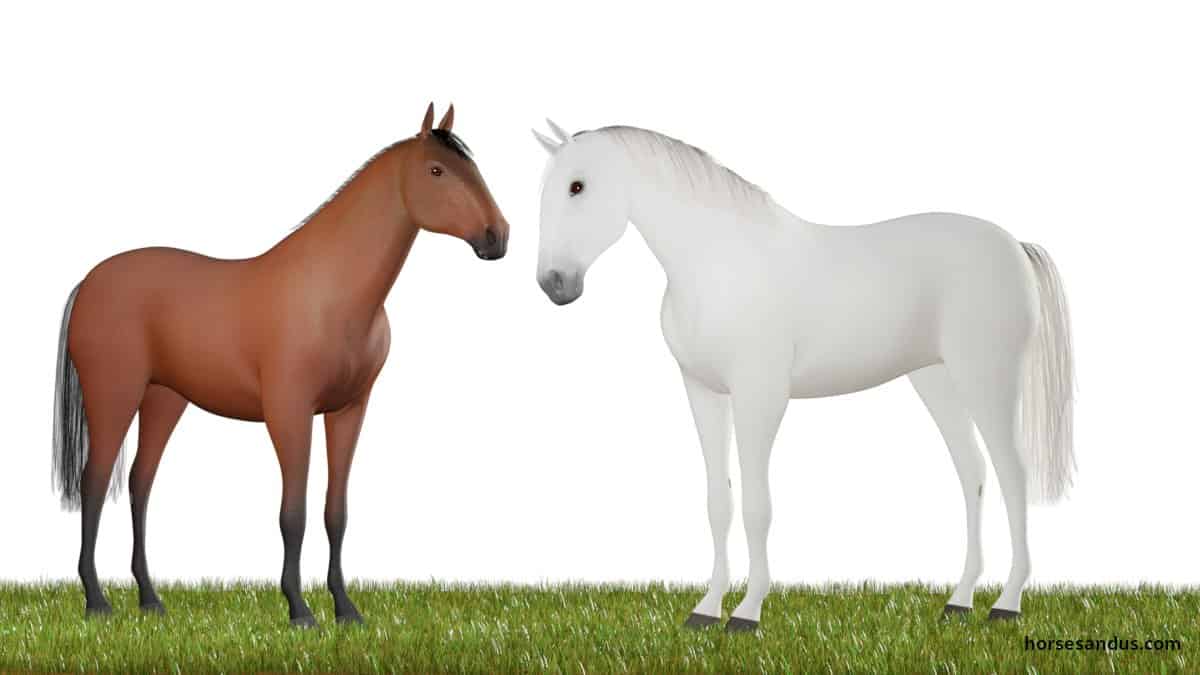
A mare is a female horse that is 4 years or older.
If a mare is a mother then it can also be called a Dam.
A stallion is a male horse that is 4 years or older that has not been gelded (castrated).
If a Stallion is a father then it can also be called a Sire
A gelding is a male horse of any age that has been gelded (castrated).
By the age of four, a horse is almost completely matured, so it’s perfectly fine to ride it regularly. Because it is still a young horse, you will have to condition it for fitness slowly.
This is when many horses begin their careers and can handle the advanced training of demanding sports like jumping, dressage, distance riding, polo, and other high speed, high impact, or physically demanding work.
Most horses reach their full adult height between the ages of 5 and 6, but some breeds won’t reach their full height until they’re around 8 years old.
At this age, they are already sufficiently mature to start breeding.
Comparing to humans, after the age of four is equivalent to adulthood.
